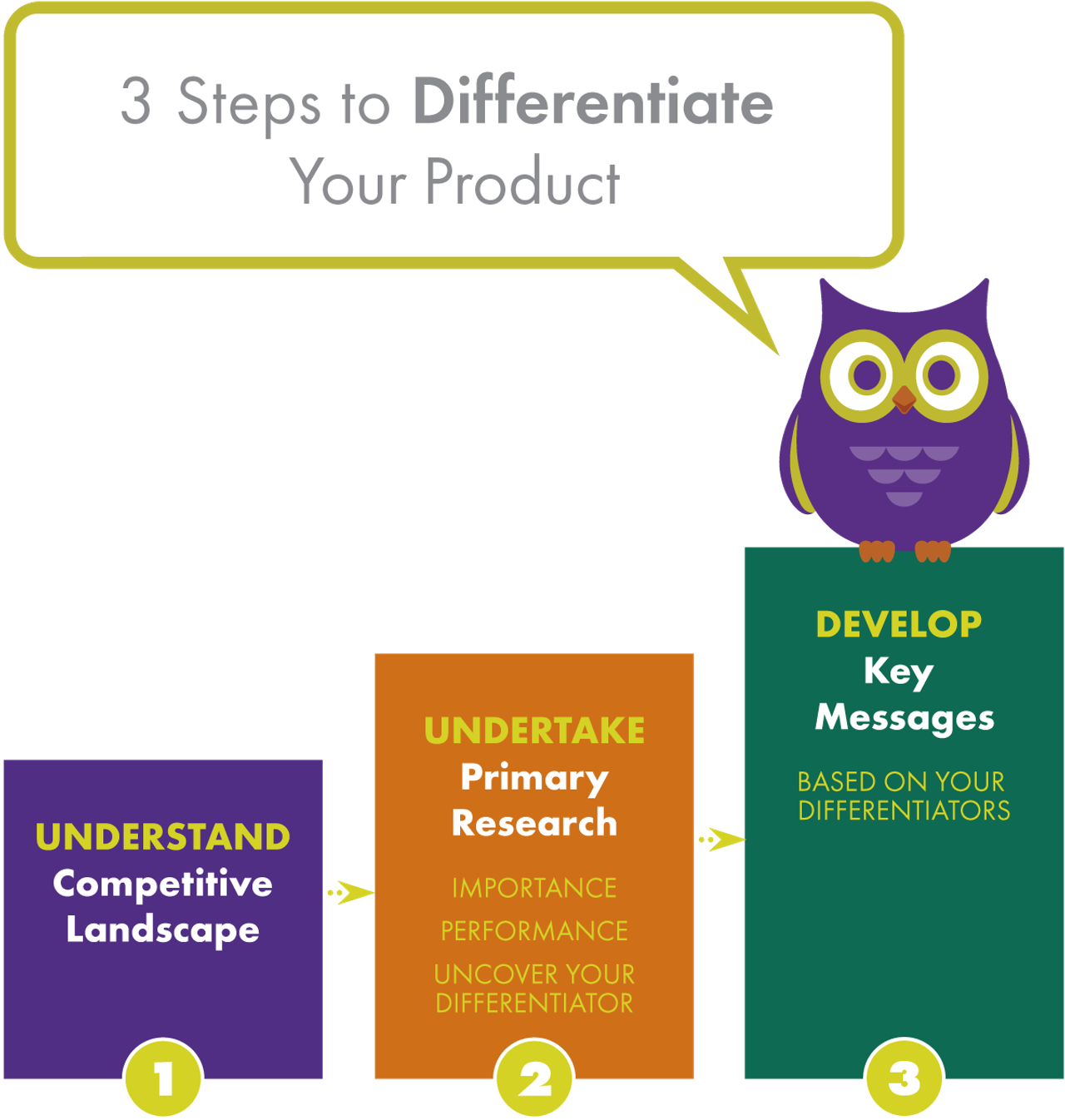Three Essential Steps to Differentiate Your Product
Creating a differentiated position in the market requires asserting a leadership position. One of the biggest advantages of uncovering your leadership position through differentiation is that it can start to build strength and equity in your brand position. Another way to think of this is your ongoing marketing budget, rather than just being an annual expense, becomes a long-term investment in building equity in your leadership position over many years. This article provides an overview of how we do that for our clients.

There are three essential steps to our best practice approach for product differentiation.
- Have a thorough understanding of the Competitive Landscape
- Undertake Primary Research
- Importance (Uncover the most meaningful product attributes and benefits)
- Performance (Verify your credentials)
- Develop Key Messaging around the differentiators and communicate consistently
Have a Thorough Understanding of the Competitive Landscape
Thanks to the internet it is remarkably efficient to access your competitors’ product information, key messaging, social media presence, and distribution network. Why is this so valuable? Because it helps establish the context of your positioning and determine if your planned differentiators are already spoken for. After all, if a proposed differentiator is not different, it is no longer a differentiator. That’s the point.
Undertake Primary Market Research
Our agency has been involved in product differentiation for 30 years. The most common mistake we see is that companies will intuitively promote what they are best at. This approach has two problems The first is that a competitor might be better at it than you and second, it may not matter that much to the marketplace.
To address this common problem, we developed a proprietary approach to primary B2B research we call IPQ, which stands for Importance/Performance Query. This process becomes invaluable in taking the guesswork out of differentiation because it tells you what is important to the market and how they perceive your performance in delivering on that importance factor. You will notice we used the word perceive. Perception is reality to the customer and the more than is respected the greater your chance of successful differentiation.
Develop Key Messaging around the differentiators and communicate consistently
Another important benefit of conducting primary research is that it tells you what to focus on and what to ignore. We generally recommend three key messages, at least one of which includes the primary differentiator. So, if your claim is important but very specific, like ‘best availability on short notice for hard-to-get repair parts, you can add a statistic such as 99.97% on-time delivery to support your claim as one of the key messages.
When you develop your differentiation in context of the market competition it does two valuable things:
- It distinguishes your offer from the crowd based on what you specifically know to be important to the market you serve.
- It puts the competition in a pickle of being a weaker copycat if they try and mimic your position.
Differentiation Can Help You Grow in an Uncertain Economy
A key value of conducting your own research is that it provides you with real-time market insights your competition may not be aware of. For example, your own marketing and sales team may not be fully aware of a major shift in what is important to your prospects and customers following the long period of Covid disruptions and now some clear economic uncertainty. When you know from your own primary research that the market believes you outperform the competition in a specific important attribute, it provides you with a long-term advantage that will help you grow faster than the competition.
If you would like a detailed example of this approach or would like to discuss further, please drop a line to patricks@scgpr.com.


